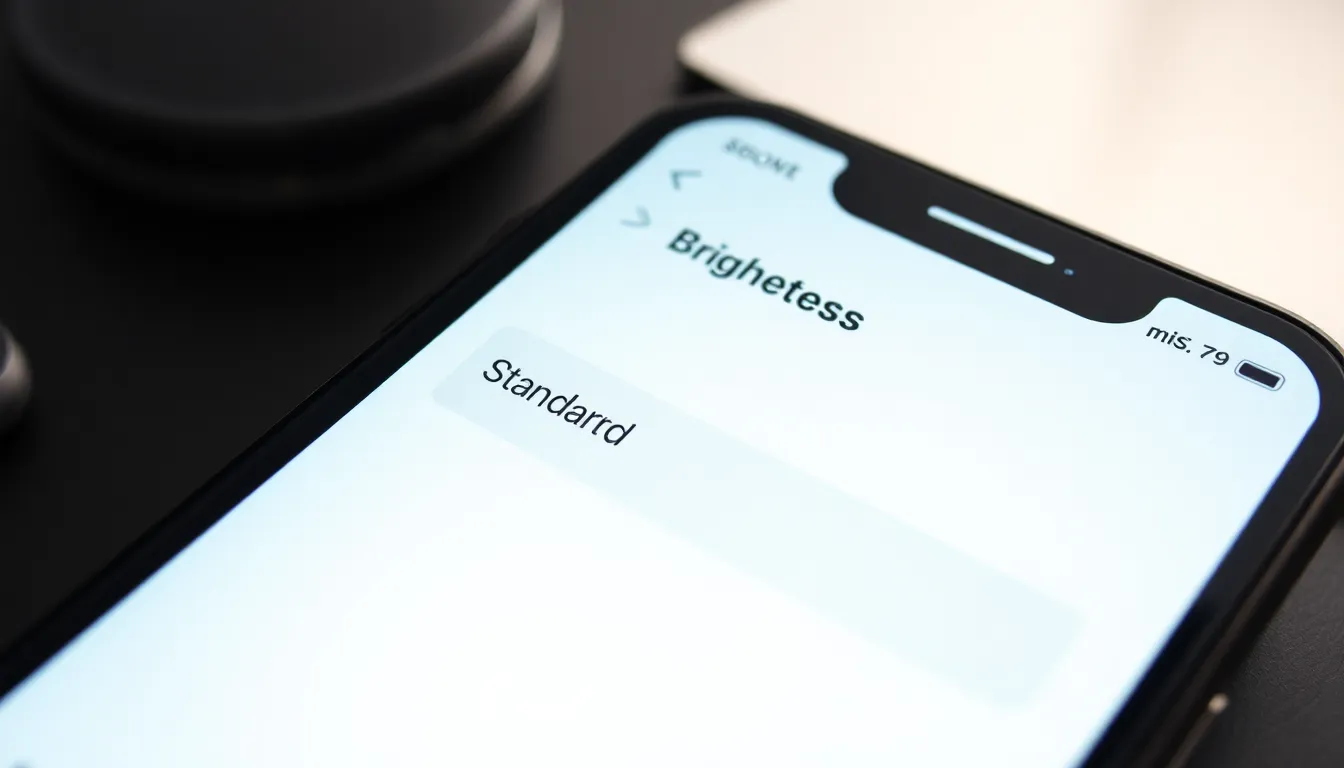Ever squinted at your iPhone screen, wondering if you need glasses or if the text really is that small? You’re not alone. Many users find themselves wrestling with their device’s display size, but there’s good news! Changing the screen size on an iPhone isn’t just possible; it’s a breeze.
Table of Contents
ToggleUnderstanding Screen Size Settings on iPhone
Adjusting screen size on an iPhone enhances visibility and comfort. Users can easily access various settings designed to improve the overall display experience.
Default Screen Size Options
Default options allow users to modify the size of text and icons quickly. Users can choose between Standard and Zoomed views in Settings. Standard offers a balanced view, while Zoomed increases the size of everything on the screen for better readability. Selecting Zoomed adapts the interface elements and text for those needing larger visuals. Experimenting with these options makes it easier to find the preferred display.
Accessibility Features for Screen Adjustment
Accessibility features provide additional options for screen adjustments. Users can access these settings by navigating to Settings, then General, and finally Accessibility. Display Accommodations allow for adjusting text size and contrast. Enabling Larger Text increases the font size across various applications. Additionally, Bold Text can enhance readability. These tools offer users greater customization for a more comfortable viewing experience.
Step-by-Step Guide to Change Screen Size on iPhone

Changing the screen size on an iPhone can significantly enhance visibility. Here are straightforward methods to adjust settings.
Adjusting Display Settings
Users can modify display settings quickly. Begin by navigating to the Settings app. Tap on Display & Brightness. Select View under the Display Zoom section. Two options appear: Standard and Zoomed. Choosing Zoomed increases the size of app icons and text. Confirm the selection by tapping Set. A preview displays changes before applying the new settings. This method provides immediate adjustments to enhance readability.
Using Accessibility Settings
Accessibility features offer additional customization for users. Access these settings by going to Settings, then choose Accessibility. From there, select Display & Text Size. Adjust the Text Size slider to increase or decrease font size. Enabling Bold Text enhances clarity further. Additionally, the Increase Contrast option improves visibility of text and backgrounds. Utilizing these features allows users to personalize their iPhone experience, making it more comfortable for daily use.
Common Issues and Troubleshooting
Adjusting the screen size on an iPhone might lead to common problems that users encounter. These issues can sometimes affect how content displays.
Problems After Changing Screen Size
After changing the screen size, some users notice their apps may not appear correctly. Text might look distorted or images might not fit the screen properly. Occasionally, certain apps may not support the new display settings, leading to glitches. To resolve these problems, restarting the device often refreshes the settings, helping to restore proper functionality. Users should also check for app updates, as developers frequently release patches that improve compatibility with new screen settings.
Resetting to Default Screen Size
Returning to the default screen size is a straightforward process. Users can navigate back to Settings, select Display & Brightness, and choose the Standard option. This action resets the display settings, reverting any adjustments made. If issues persist even after resetting, it’s beneficial to restart the device again. This step ensures that all changes are applied correctly, enhancing overall usability. Users can also explore other accessibility features to further customize their experience.
Tips for Optimal Screen Size Experience
Adjusting screen size can significantly improve user experience. Several factors contribute to optimal visibility and comfort based on specific needs.
Recommended Screen Sizes for Different Activities
For reading, a zoomed view enhances text clarity, making it suitable for books and articles. Gaming benefits from a standard size, providing a balanced view of the action without distortion. Watching videos often looks best in zoomed mode, as it fills the screen, enhancing immersion. Social media browsing works well in standard mode, allowing easy access to all elements. Lastly, for detailed tasks like photo editing, choose a larger, zoomed display for precise adjustments.
How Screen Size Affects App Usability
Screen size influences app usability in distinct ways. Smaller text may lead to difficulty in navigation, affecting interaction speed. Icons can appear crowded in standard mode, complicating task execution. Zoomed views increase touch target size, promoting better accuracy when selecting options. Readability improves with adjusted text size, enhancing overall user satisfaction. Users often find that different apps fare better with specific display settings, deriving maximum functionality from their iPhones.
Adjusting the screen size on an iPhone can significantly enhance the user experience. By taking advantage of the various display and accessibility settings available users can create a more comfortable and personalized interface. Whether it’s switching between Standard and Zoomed views or fine-tuning text size and contrast these adjustments cater to individual preferences and needs.
Exploring these features not only improves readability but also optimizes app usability across different activities. Users should feel empowered to experiment with their settings until they find the perfect balance that enhances their iPhone experience. Embracing these simple changes can lead to a more enjoyable and efficient interaction with their device.


